Articles: Bookreview 2013
Andrew J. Lawson, Painted Caves. 446 pages. Illustrated. Oxford University Press, 2012. ISBN:978-0-19-969822-6.
Knut Helskog: Samtaler med makterne
Graben für Germanien. Archäologie unterm Hakenkreuz. Herausgegeben vom Focke Museum (Bremen) unter Mitarbeit von Sandra Gerlinger, Frauke von der Haar, Uta Halle, Dirk Mahsarski und Karin Walter; 216 Seiten mit 133 zum Teil farbigen Abbildungen,gebunden mit Schutzumschlag, 29,95 Euro (D); ISBN 978 3 8062 2673 7, Konrad Theiss Verlag, Stuttgart 2013
Johannes Groht, Menhire in Deutschland. Mit Beiträgen von Ralf Schwarz und Bernd Zich. Herausgegeben von Harald Meller; 504 Seiten mit zahlreichen, großteils farbigen Abbildungen, gebunden im Hartkarton mit Panoramabild, 49,90 Euro (D); ISBN 978 3 943904 18 5, Landesamt für Denkmalpflege und Archäologie Sachsen-Anhalt & Nünnerich-Asmus Verlag, Halle (Saale) 2013
Jitka Soukopova, Round Heads. 186 pages. Illustrated. Cambridge Scholars 2012. ISBN(10):1-4438-4007-6, ISBN (13):978-1-4438-4007-1.
Ditte Bandini-König, Die Felsbildstation Thalpan V, MANP Band 10. 278 sider+Tavler 1-103(sort-hvid) samt Tavler 1-41 (farve). Endvidere kortbog med 9 kort. Verlag Philipp von Zabern, 2011. ISBN:978-3-8053-4394-7.
Rock Art and Sacred Landscapes, Donna Gillette, William Breen Murray, Mavis Greer, & Michele Helene Hayward (Eds). ISBN-10: 1461484057; ISBN-13: 978- 1461484059; 230 pp, hardback. Springer; 2014 edition (31 Oct 2013). Price GB £99. http://www.amazon.co.uk/Rock- Sacred-Landscapes-World-Archaeology/ dp/1461484057/
Agrarsamfundenes ekspansion i nord. Symposium på Tanums Hällristningsmuseum, Maj 2011. ISBN: 978-87-7602-196-2. 20 Artikler fra symposiet. © Nationalmuséet og forfatterne. En digital version findes på: http://nordligeverdener.natmus.dk.
David Vogt, Østfolds helleristninger. Oslo 2012. 489 s. ISBN 978-82-15- 01914 -7.
Patrick Ettighofer: Le Soleil et la Lune. 345 pages, fully ill.. ISBN 978-2-296-96990-2. © L’Harmattan, 2012. Available: harmattan@wanadoo.fr .
Jean-Marie Guastavino: Des Gravures Rupestres du Bohuslän, Suède: Vers une Approche Quantitative, Université de Paris-Sorbonne, Janvier 2014
Trond Lødøen and Gro Mandt: The Rock Art of Norway. 338 pages, fully ill., colour print. ISBN 978-1-905119-28-8. Available from Oxbow Books, Oxford, UK. www.oxbowbooks.
Andreas Nordberg, Fornnordisk religionsforskning mellan teori och empiri, Uppsala 2013
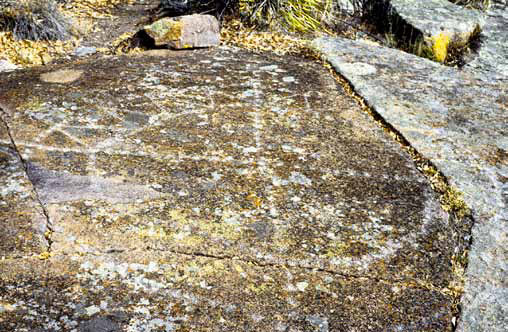 The archeology of northern Mexico has revealed several peculiarities of the prehispanic societies that occupied that region for a long time. As compared to groups in Nuclear Mesoamerica, these are very significant differences. It has been proven that the northern region was, by no means, an insurmountable desert, and that the societies dwelling there were part of a very complex interaction system from very early times in their Pre-Columbian History.
The archeology of northern Mexico has revealed several peculiarities of the prehispanic societies that occupied that region for a long time. As compared to groups in Nuclear Mesoamerica, these are very significant differences. It has been proven that the northern region was, by no means, an insurmountable desert, and that the societies dwelling there were part of a very complex interaction system from very early times in their Pre-Columbian History.One of the identified characteristics of the region is its “rock art” (petroglyphs and paintings), which was usually attributed (not exclusively though) to bands of huntergatherers; their interaction with other groups is clearly seen in the archeological evidence through the pecked cross circles.
These representations owe their name to their cruciform design that is traced through a series of dots drilled or pecked on rocks or stucco. They are about 2 centimeters in diameter and they are placed at 3-4 centimeters intervals, measured at the center of each point; however, this is not a standard measure.
Read the article as pdf
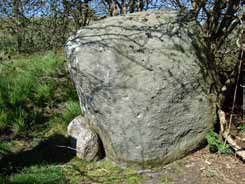 In 1996 we found the first signs of a large prehistoric construktion on the islands of Vigø and Illumø in the Bay of Helnæs on South West Funen. Up until then this large prehistoric construktion was completely unknown and seemed to us to be a culturehistorical mystery.
In 1996 we found the first signs of a large prehistoric construktion on the islands of Vigø and Illumø in the Bay of Helnæs on South West Funen. Up until then this large prehistoric construktion was completely unknown and seemed to us to be a culturehistorical mystery.The landscape of West Funen surrounding the Bay of Helnæs tells of a rich territory with settlements and activities dating back to the late Mesolithic, Neolithic, Bronze, Iron and Viking Ages. The archaeological material bears witness to the heydays of the settlement during the Neolithic (Sarup) and late Bronze Ages (Voldtofte). From the late Iron Age there are three rune stones that say that the territory was a priestdom for a period leading up to the Viking Age.
Read the article as pdf
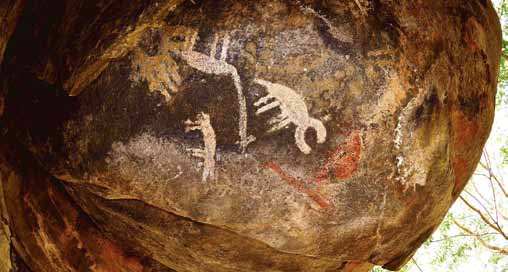 The Irangi-Kondoa Rock Painting Sites of central Tanzania were originally nominated as a World Heritage Site in 2006 on account of their outstanding universal value: the sites are a testimony to the lives of hunter-gatherers and agriculturalists who have lived in the area over several millennia, and are still used by some local communities for ritual activities such as rain-making, divining and healing.
The Irangi-Kondoa Rock Painting Sites of central Tanzania were originally nominated as a World Heritage Site in 2006 on account of their outstanding universal value: the sites are a testimony to the lives of hunter-gatherers and agriculturalists who have lived in the area over several millennia, and are still used by some local communities for ritual activities such as rain-making, divining and healing.The existence of rock paintings in a 40 000 sq km area of central Tanzania has been known to Westerners for almost a hundred years. Louis Leakey noted many sites in the area in the 1920s (Bwasiri, 2008). Early surveys were made by Ludwig Kohl-Larsen who traced images in at least 76 shelters in 1935, (Kohl-Larsen, 1958, Henry Fosbrooke, 1950), Mary and Louis Leakey in 1935 and 1951 who traced over 1 600 painted images at 186 sites in a small area north of Kondoa (Leakey, 1983); Fidelis Masao who surveyed 68 rock paintings sites and excavated four of them (Masao, 1979), and in 1981-1983 Emmanuel Anati who recorded 200 sites in Kondoa (Anati, 1986). Other researchers in the general area include Eric ten Raa, (1971 and 1974), David Lewis-Williams (1986) Imogene Lim (1992) and Emmanuel Bwasiri (2008, 2011).
Read the article as pdf
 This study investigates the variant forms of ritual human sacrifice attested in the Olmec-style rock carvings of Chalcatzingo, in Morelos, Mexico. While there are no complete renditions of an entire Middle Formative period (900-500 BC) ceremony involving human sacrifice to be found at the site, there appear to be a number of shared themes in the rock carvings concerning the people involved in sacrificial rites, the types of sacrifice employed at Chalcatzingo, and the mytho-religious underpinnings of these rituals and their linkages to rulership. Although this study will focus on different configurations of the practice of ritual human sacrifice observable in the Olmec iconography of Chalcatzingo’s monuments, comparative data from Classic and Late Postclassic period Central Mexican, Gulf Coast and Maya sources will be used when appropriate. It is hoped that by studying the ritual of human sacrifice at Chalcatzingo, this paper will contribute to our understanding of the role such cultural practices and their representation in rock art played in the social construction of elite identities at the site.
This study investigates the variant forms of ritual human sacrifice attested in the Olmec-style rock carvings of Chalcatzingo, in Morelos, Mexico. While there are no complete renditions of an entire Middle Formative period (900-500 BC) ceremony involving human sacrifice to be found at the site, there appear to be a number of shared themes in the rock carvings concerning the people involved in sacrificial rites, the types of sacrifice employed at Chalcatzingo, and the mytho-religious underpinnings of these rituals and their linkages to rulership. Although this study will focus on different configurations of the practice of ritual human sacrifice observable in the Olmec iconography of Chalcatzingo’s monuments, comparative data from Classic and Late Postclassic period Central Mexican, Gulf Coast and Maya sources will be used when appropriate. It is hoped that by studying the ritual of human sacrifice at Chalcatzingo, this paper will contribute to our understanding of the role such cultural practices and their representation in rock art played in the social construction of elite identities at the site.
Read the article as pdf
 In this article I carry out an analysis of the sun journey in Bronze Age rock art in south Scandinavia. The story is based upon a widely shared Indo-European myth about the sun maiden and her twin brothers and helpers, the Divine or Heavenly Twins, who in disguise of ships and horses come to her help so that the sun can rise in the morning. This myth can be illustrated by combining Bronze Age iconography, bronze figurines, burials, hoards, and rock art (Kristiansen and Larsson 2005, fig. 139). Here I wish to explore if scenes referring to the sun journey can be identified in rock art alone. I apply the method of identifying singular motifs that relate to the overall narrative of the journey of the sun. I have selected and combined episodes from various rock art panels that refer back to the original mythological narrative of the sun journey. Although there is some regional variation it can be demonstrated that Bronze Age rock art in Scandinavia contains scenes from the shared Indo-European myth about the sun journey.
In this article I carry out an analysis of the sun journey in Bronze Age rock art in south Scandinavia. The story is based upon a widely shared Indo-European myth about the sun maiden and her twin brothers and helpers, the Divine or Heavenly Twins, who in disguise of ships and horses come to her help so that the sun can rise in the morning. This myth can be illustrated by combining Bronze Age iconography, bronze figurines, burials, hoards, and rock art (Kristiansen and Larsson 2005, fig. 139). Here I wish to explore if scenes referring to the sun journey can be identified in rock art alone. I apply the method of identifying singular motifs that relate to the overall narrative of the journey of the sun. I have selected and combined episodes from various rock art panels that refer back to the original mythological narrative of the sun journey. Although there is some regional variation it can be demonstrated that Bronze Age rock art in Scandinavia contains scenes from the shared Indo-European myth about the sun journey.
Read the article as pdf
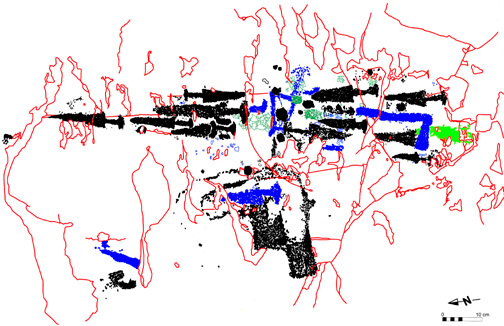 In 1982 Professor Anati wrote that the rock carvings of Valcamonica were an almost inexhaustible heritage. Since then, the discoveries have been many, new areas have been investigated, known ones have been published. Today, although there are new discoveries every year, we know the rock art heritage of Valcamonica in great detail and even the different features of different sites: nevertheless, much is still waiting to be properly recorded, studied, understood. That is why our Department of Research and Education of the Centro Camuno di Studi Preistorici during the last four years focused mainly on integrating and analyzing the documentation concerning well known sites, such as Campanine, Foppe di Nadro or other areas on the eastern slope, surrounding the Naquane National Park. Here the environment still bears the clues of traditional economic activities, as paths, stone huts and ancient stone walls: the recovery and valuation of these signs, both naturalistic and folkloric, is now the commitment of the “Natural Reserve of Rock Engravings of Ceto, Cimbergo, Paspardo”; the land-use framework that is thus outlined, including rock carvings, extends from prehistory to the fully historic age.
In 1982 Professor Anati wrote that the rock carvings of Valcamonica were an almost inexhaustible heritage. Since then, the discoveries have been many, new areas have been investigated, known ones have been published. Today, although there are new discoveries every year, we know the rock art heritage of Valcamonica in great detail and even the different features of different sites: nevertheless, much is still waiting to be properly recorded, studied, understood. That is why our Department of Research and Education of the Centro Camuno di Studi Preistorici during the last four years focused mainly on integrating and analyzing the documentation concerning well known sites, such as Campanine, Foppe di Nadro or other areas on the eastern slope, surrounding the Naquane National Park. Here the environment still bears the clues of traditional economic activities, as paths, stone huts and ancient stone walls: the recovery and valuation of these signs, both naturalistic and folkloric, is now the commitment of the “Natural Reserve of Rock Engravings of Ceto, Cimbergo, Paspardo”; the land-use framework that is thus outlined, including rock carvings, extends from prehistory to the fully historic age.
Read the article as pdf
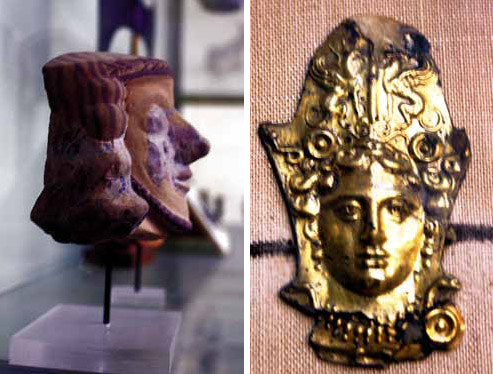 For the author, there is some evidence that Minoan settlers from Crete (Heraklion) were probably Scandinavians, who arrived to the island between the 2nd and the 1st millennium BC. Not only the toponymy of the island, transformed by the influence of the Mycenaean culture and Egyptan’s show this evidence, but also some customs from Nordic prehistory suggest that it would be a Gothic tribe detached from pastoral Aryans, possibly before they were on their way to India. Dances practiced by Crete’s Adorants are the crucial provs, at the author offers exclusively for ADORANTEN.
For the author, there is some evidence that Minoan settlers from Crete (Heraklion) were probably Scandinavians, who arrived to the island between the 2nd and the 1st millennium BC. Not only the toponymy of the island, transformed by the influence of the Mycenaean culture and Egyptan’s show this evidence, but also some customs from Nordic prehistory suggest that it would be a Gothic tribe detached from pastoral Aryans, possibly before they were on their way to India. Dances practiced by Crete’s Adorants are the crucial provs, at the author offers exclusively for ADORANTEN.
Read the article as pdf
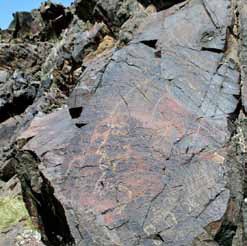 Kazakhstan and Kyrgyzstan are famous for their large number of petroglyph sites. In South Kazakhstan, the site of Tamgaly has been included in the UNESCO World Heritage List in 2004. The particularity of the rock carving sites of both countries is the continuity of this kind of art. The main petroglyphs date back to the Bronze and Iron Age, but the tradition of rock carving was perpetuated in the Middle Ages, especially in the Turkic era, and in more recent times, like in the Dzhungarian period (XVII-XVIII AD), and continued in the last hundred years. Each year, Kazakh and Kyrgyz shepherds produce new rock carvings in order to kill time.
Kazakhstan and Kyrgyzstan are famous for their large number of petroglyph sites. In South Kazakhstan, the site of Tamgaly has been included in the UNESCO World Heritage List in 2004. The particularity of the rock carving sites of both countries is the continuity of this kind of art. The main petroglyphs date back to the Bronze and Iron Age, but the tradition of rock carving was perpetuated in the Middle Ages, especially in the Turkic era, and in more recent times, like in the Dzhungarian period (XVII-XVIII AD), and continued in the last hundred years. Each year, Kazakh and Kyrgyz shepherds produce new rock carvings in order to kill time.
Read the article as pdf
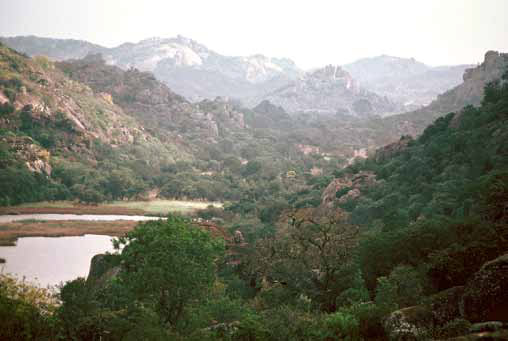 The Matobo Hills or Matopos as it used to be called is a giant granite batholith in western Zimbabwe, spreading over more than 2000 km. The name alludes to the countless hills of which it comprises. Its northern, eastern and southern edges are well defined, as the hills give way abruptly to more open country here, but on the western side, the hills become smaller and more isolated, before finally ending in the Great Kalahari sandveld a few hundred kilometres away.
The Matobo Hills or Matopos as it used to be called is a giant granite batholith in western Zimbabwe, spreading over more than 2000 km. The name alludes to the countless hills of which it comprises. Its northern, eastern and southern edges are well defined, as the hills give way abruptly to more open country here, but on the western side, the hills become smaller and more isolated, before finally ending in the Great Kalahari sandveld a few hundred kilometres away.Topographically, the Matobo comprises a series of hills generally separated by nearparallel valleys where rivers have exploited natural joints, with those running NNW/SSE more dominant due to greater erosion here than with the east-west ones. Hills are more developed and steep-sided in the south where erosion has been more pronounced and are either primarily bare whalebacks, stacks of balancing rocks known as castle kopjes or intermediate combinations of both.
Read the article as pdf
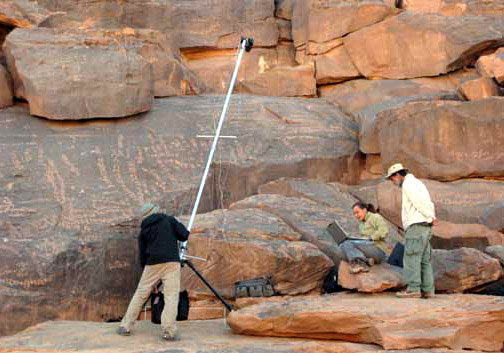 The combination between a rich iconographic repertoire and a well-preserved archaeological record makes the Acacus mountains a very fortunate case study. Not by chance, the first chronological indications for the Saharan rock art came from the Acacus mountains, as well as the possibility to archaeologically investigate at least some of the aspects depicted in the painted and engraved scenes, such as milking. In a sense, one could say that this is the only area in the Sahara (and probably in North Africa) where archaeological investigations and rock art study developed together and where, in many cases, elements and subjects painted or engraved on the rock walls have been found or identified in the archaeological record. However, the link between the two records requires a solid chronological basis and a sound theoretical framework, both unfortunately yet to be entirely attained.
The combination between a rich iconographic repertoire and a well-preserved archaeological record makes the Acacus mountains a very fortunate case study. Not by chance, the first chronological indications for the Saharan rock art came from the Acacus mountains, as well as the possibility to archaeologically investigate at least some of the aspects depicted in the painted and engraved scenes, such as milking. In a sense, one could say that this is the only area in the Sahara (and probably in North Africa) where archaeological investigations and rock art study developed together and where, in many cases, elements and subjects painted or engraved on the rock walls have been found or identified in the archaeological record. However, the link between the two records requires a solid chronological basis and a sound theoretical framework, both unfortunately yet to be entirely attained.
Read the article as pdf

|

